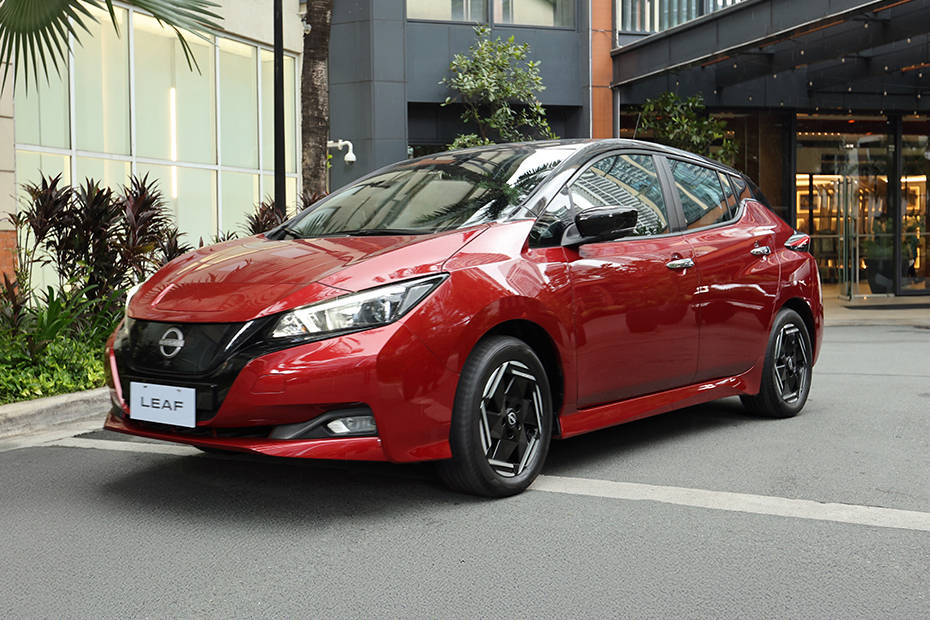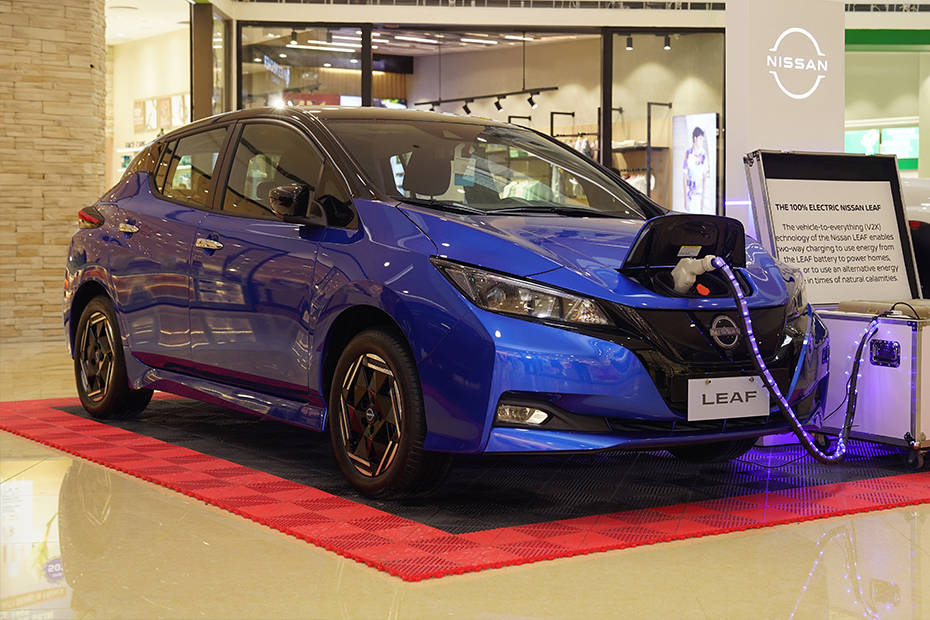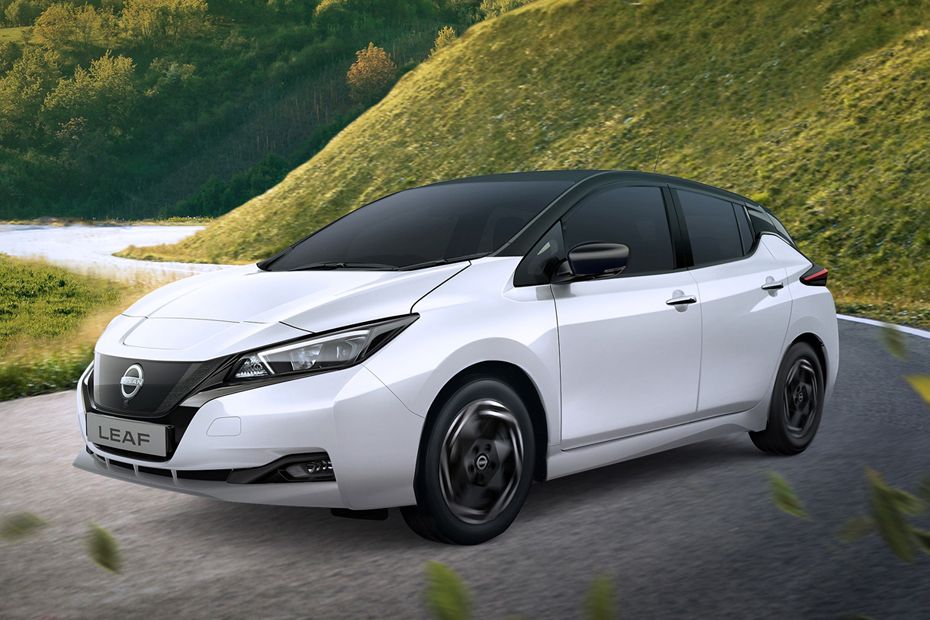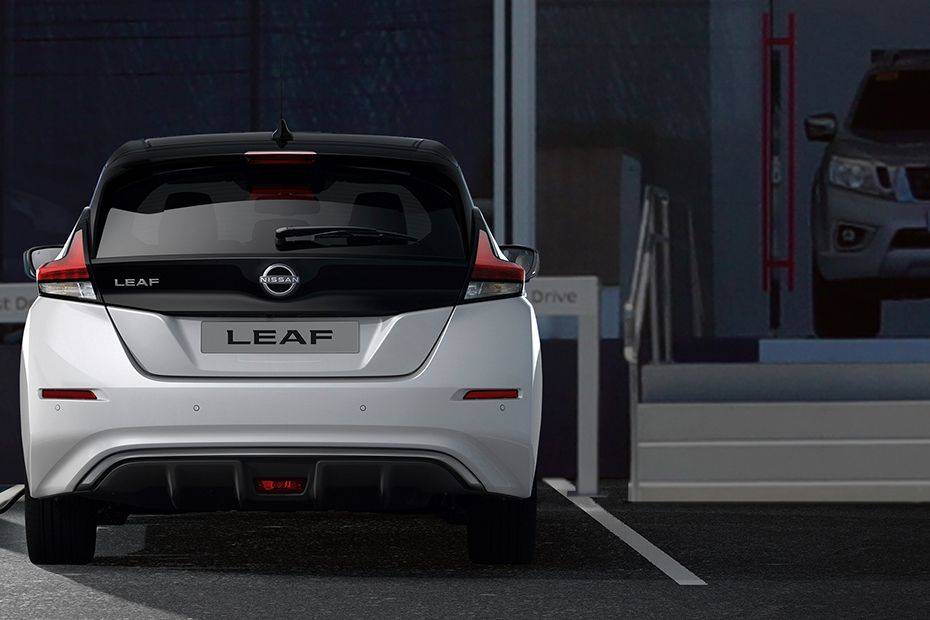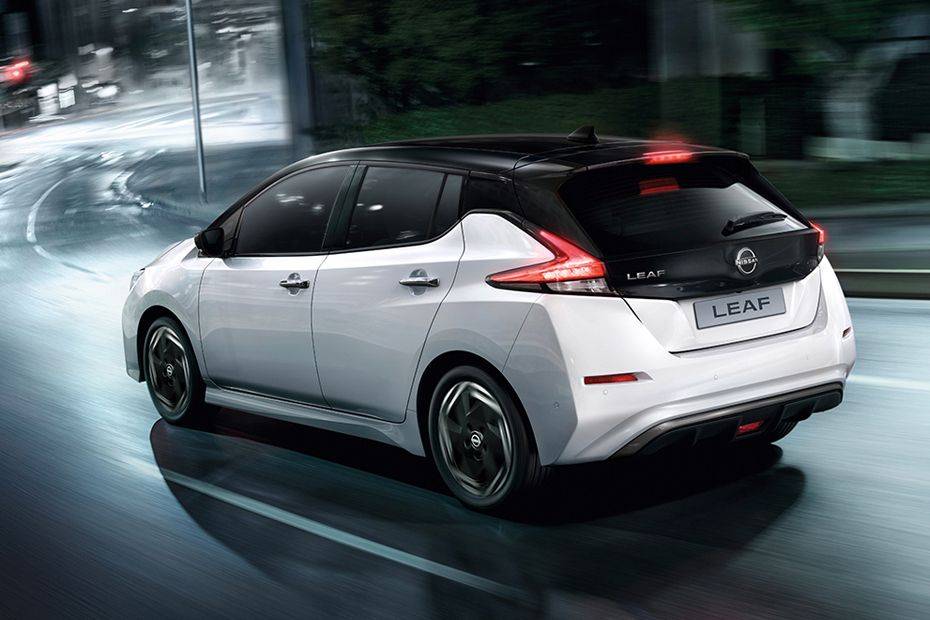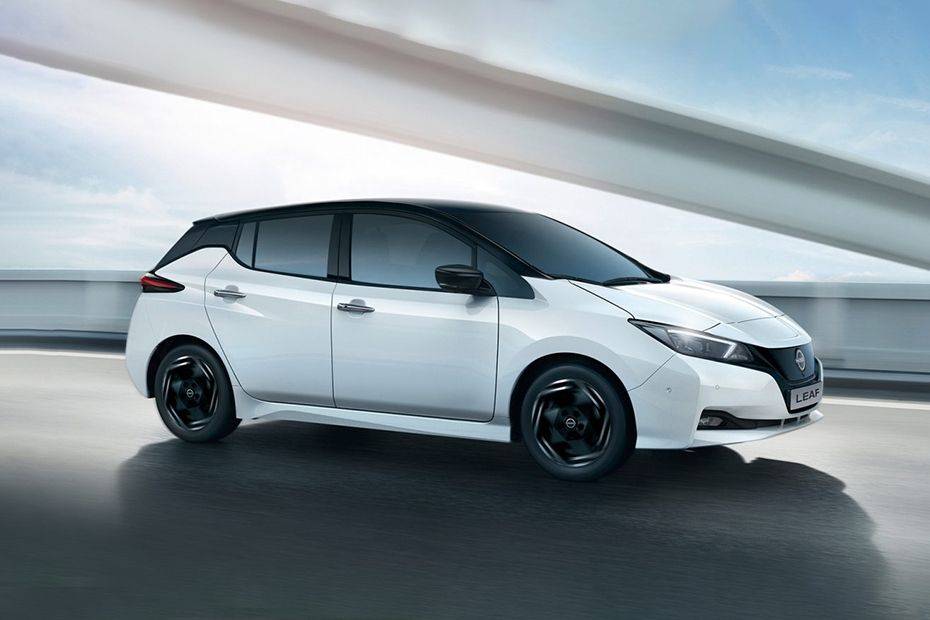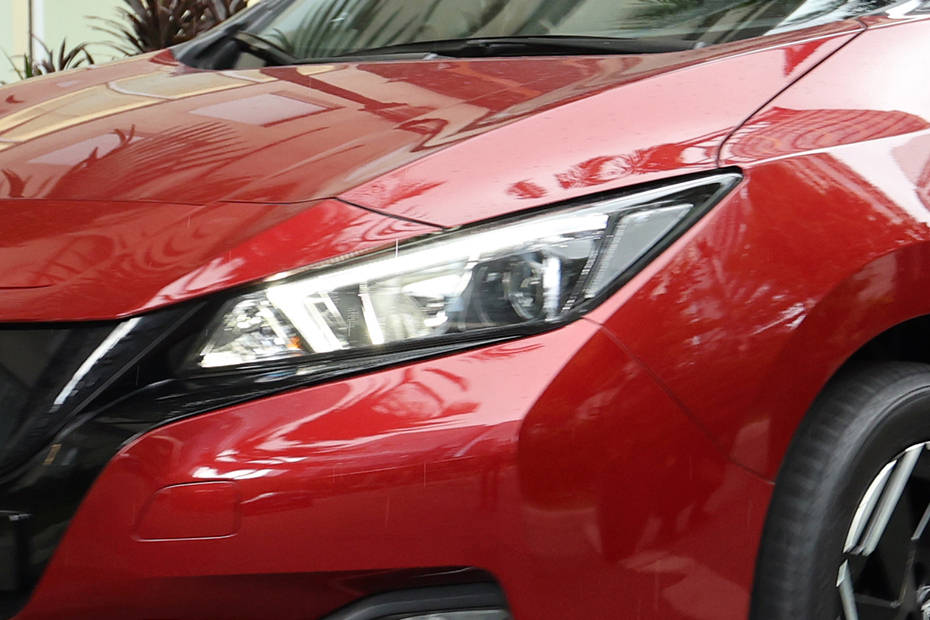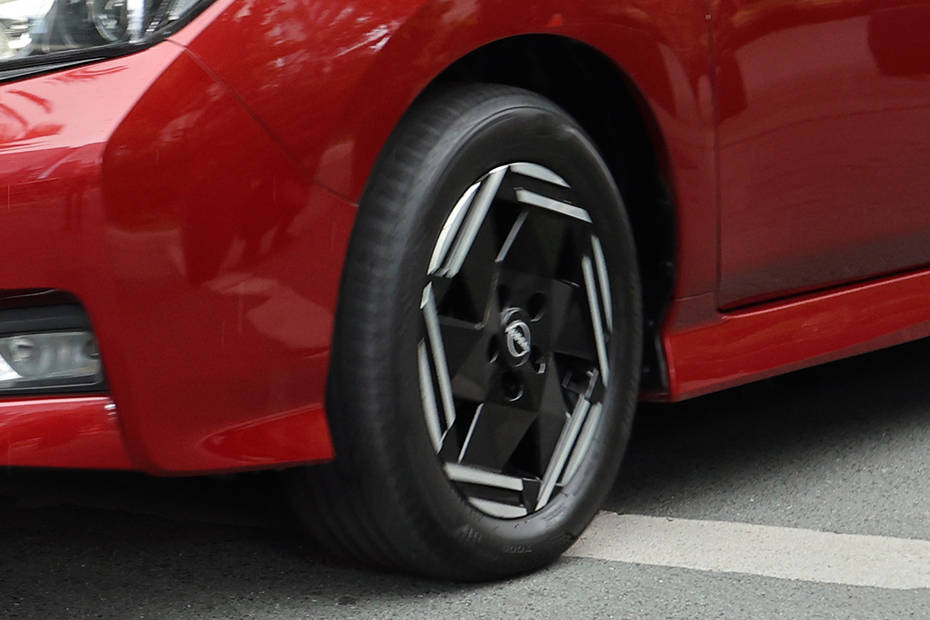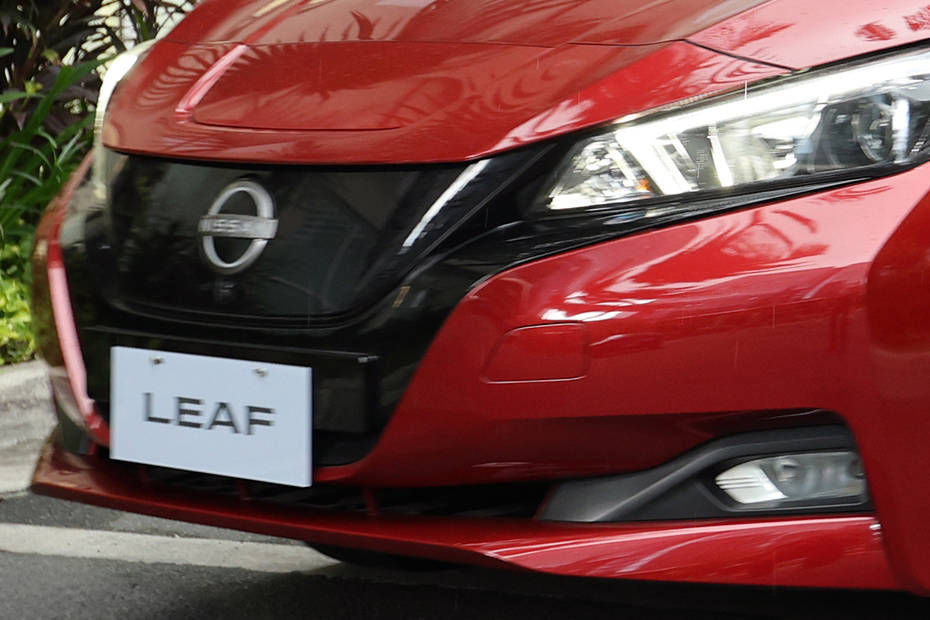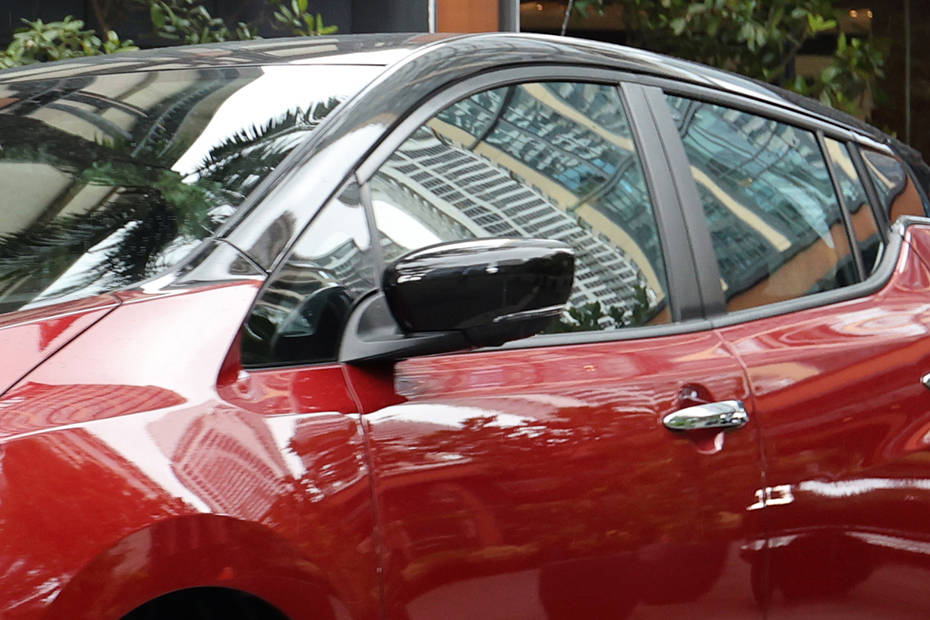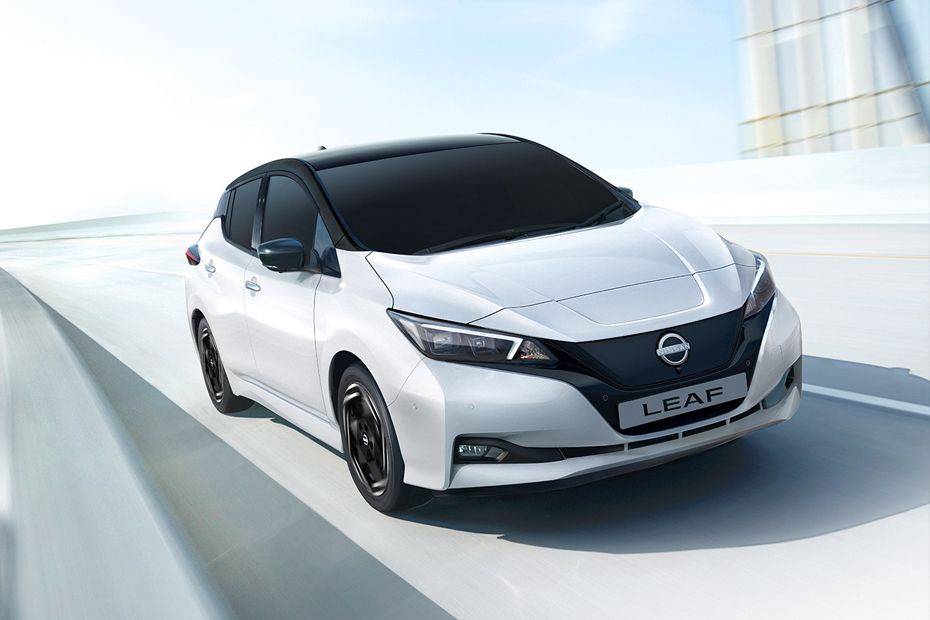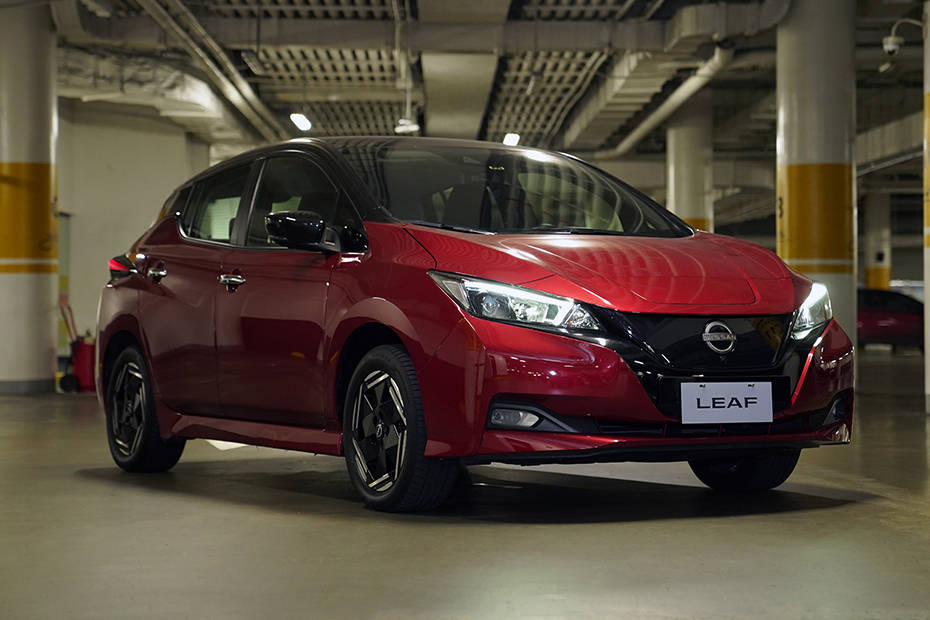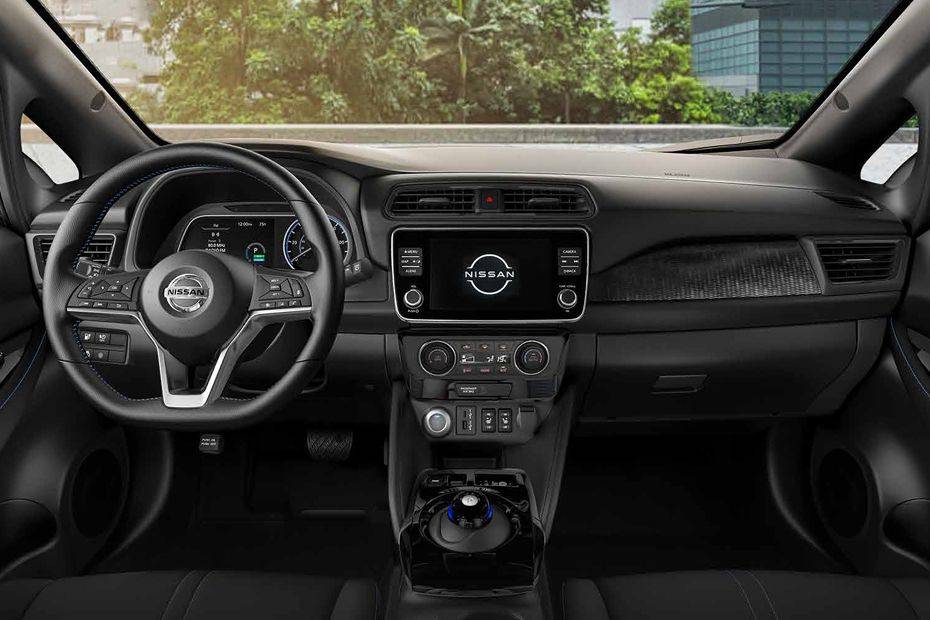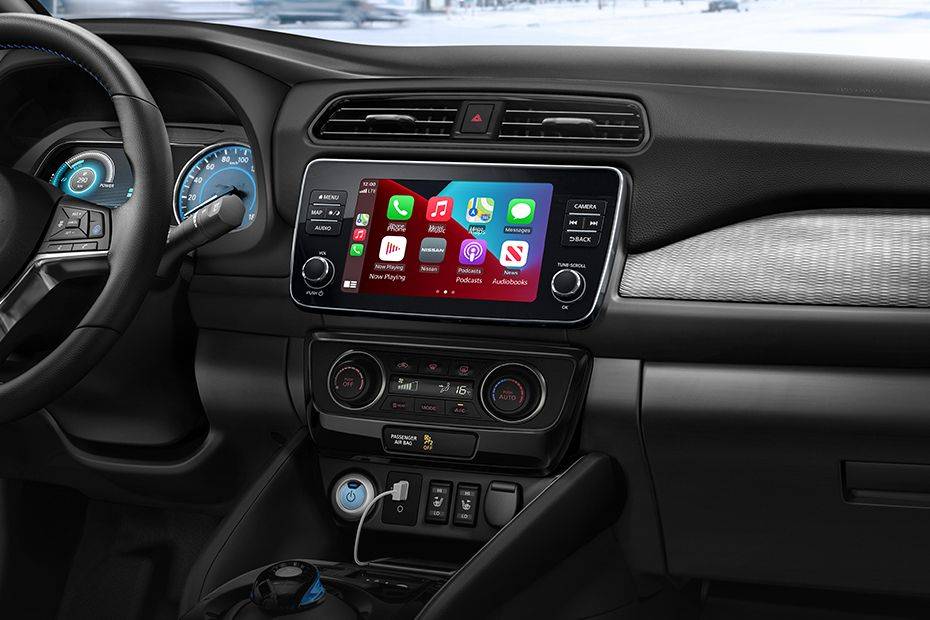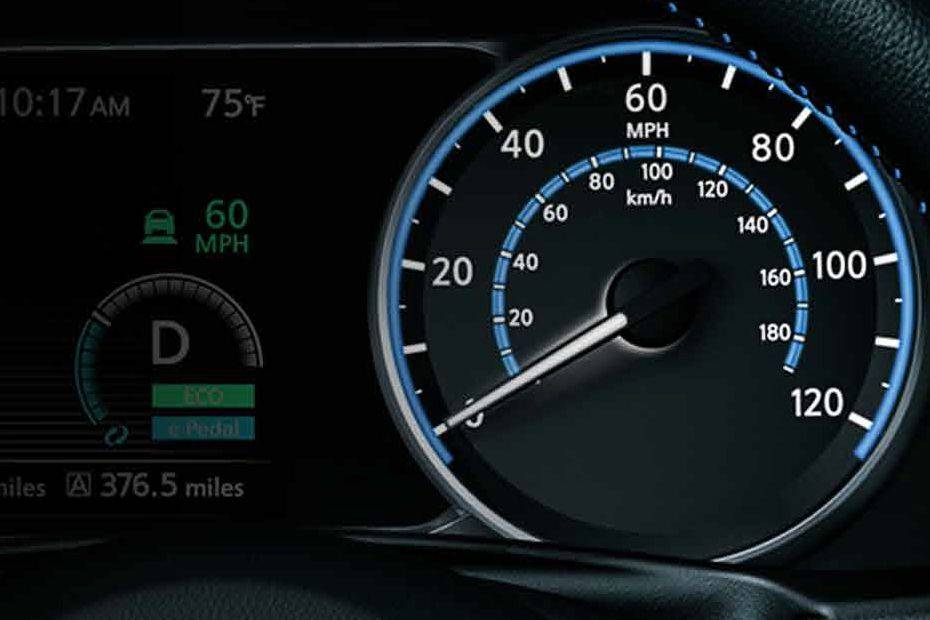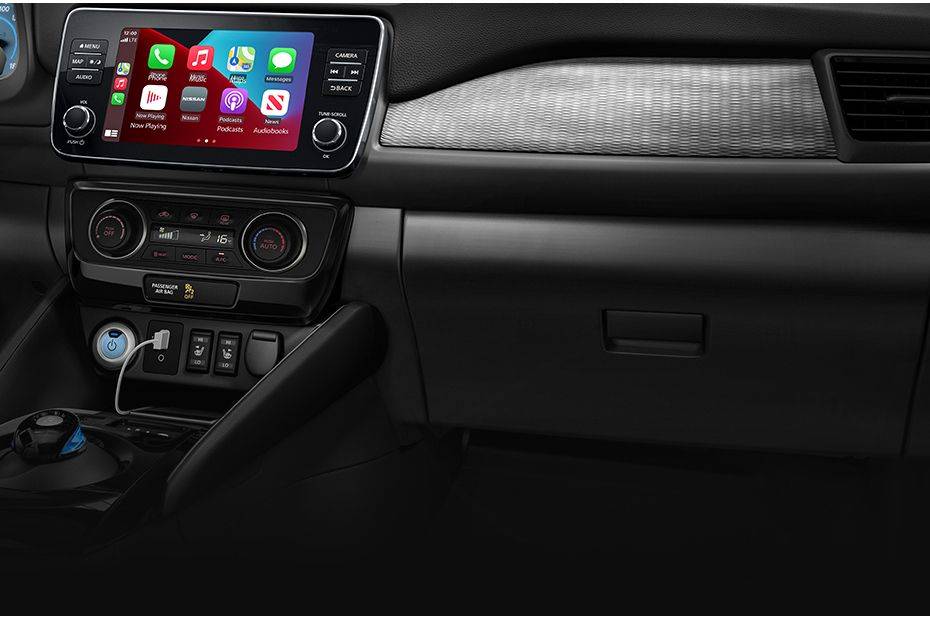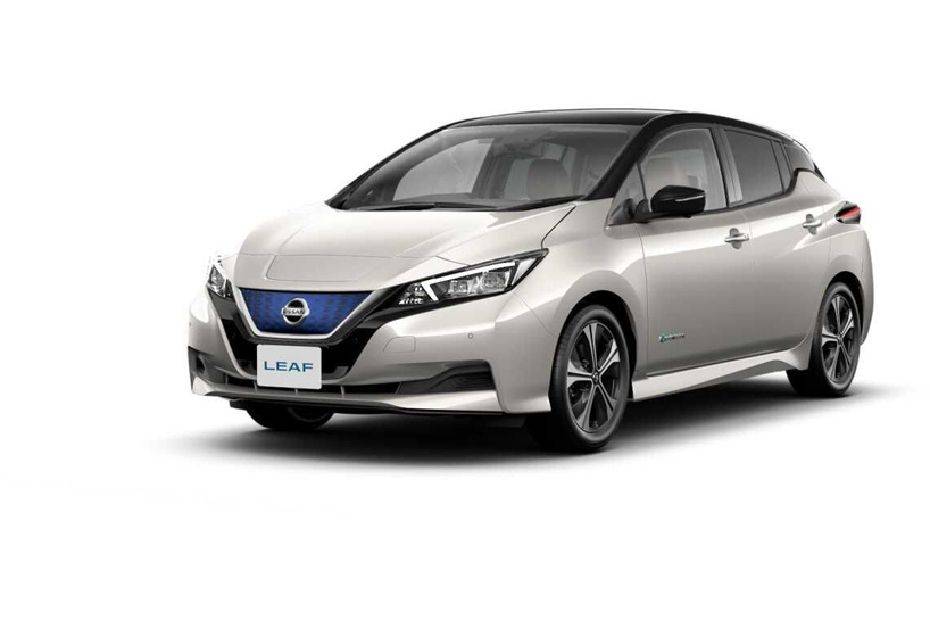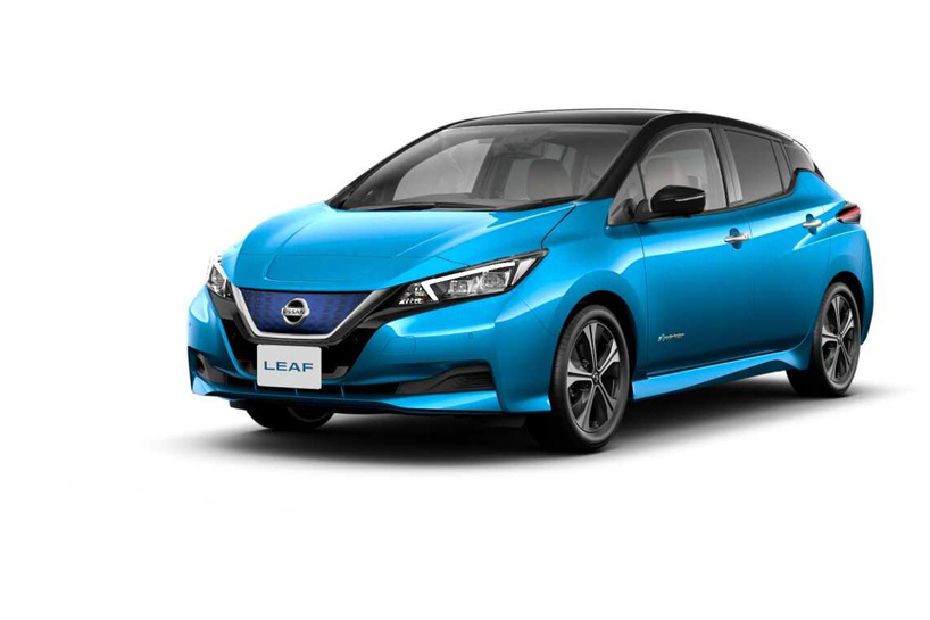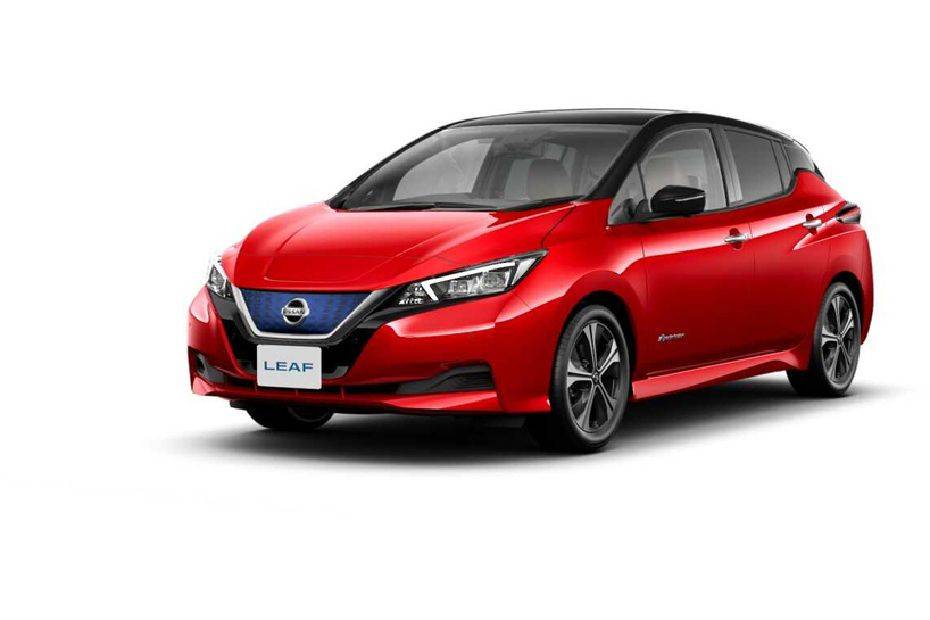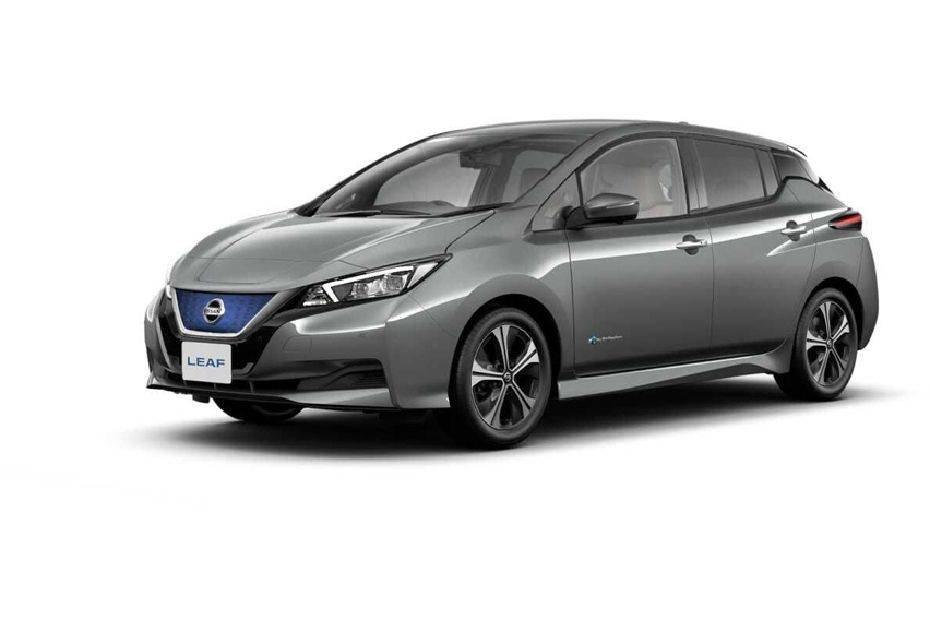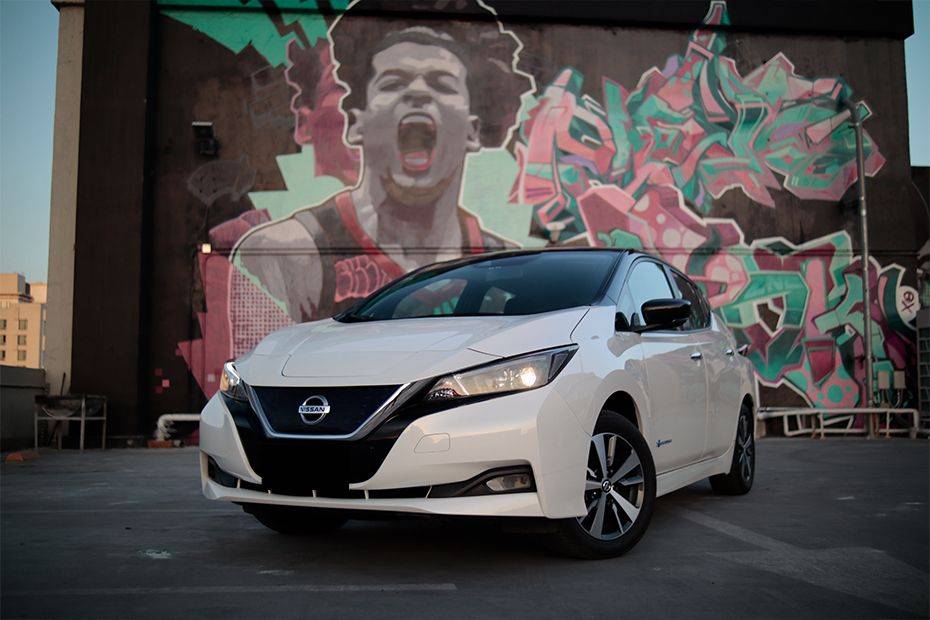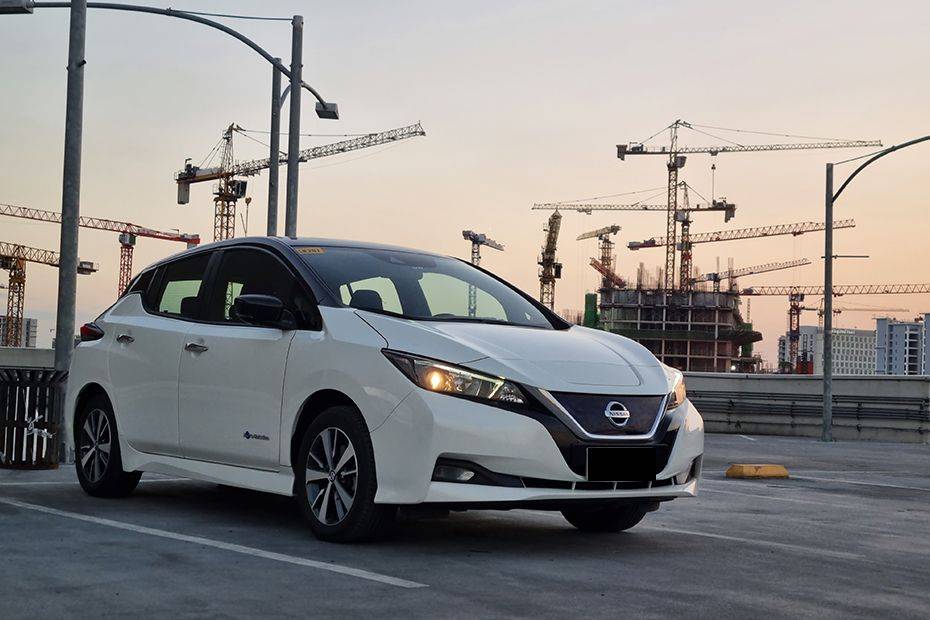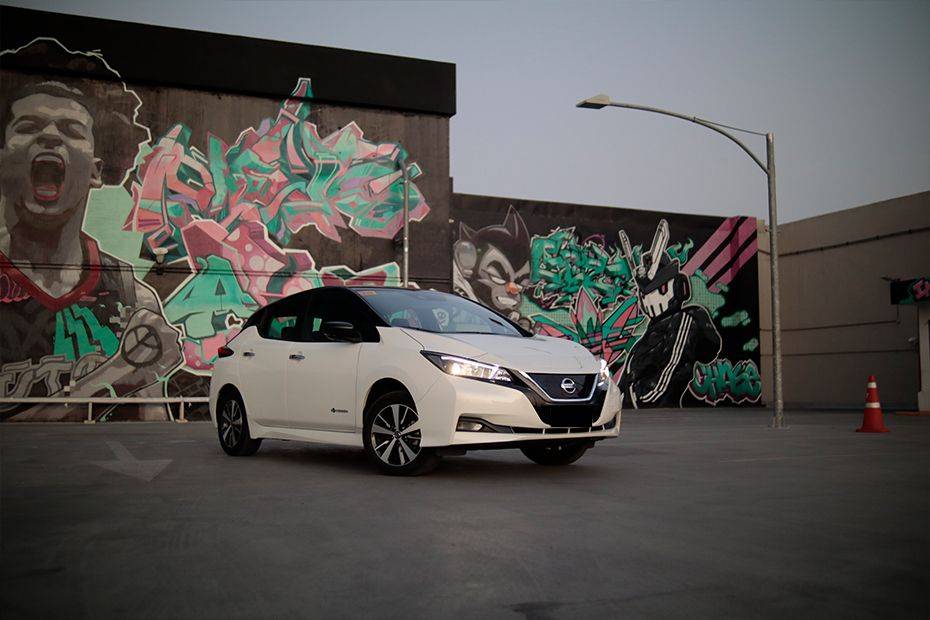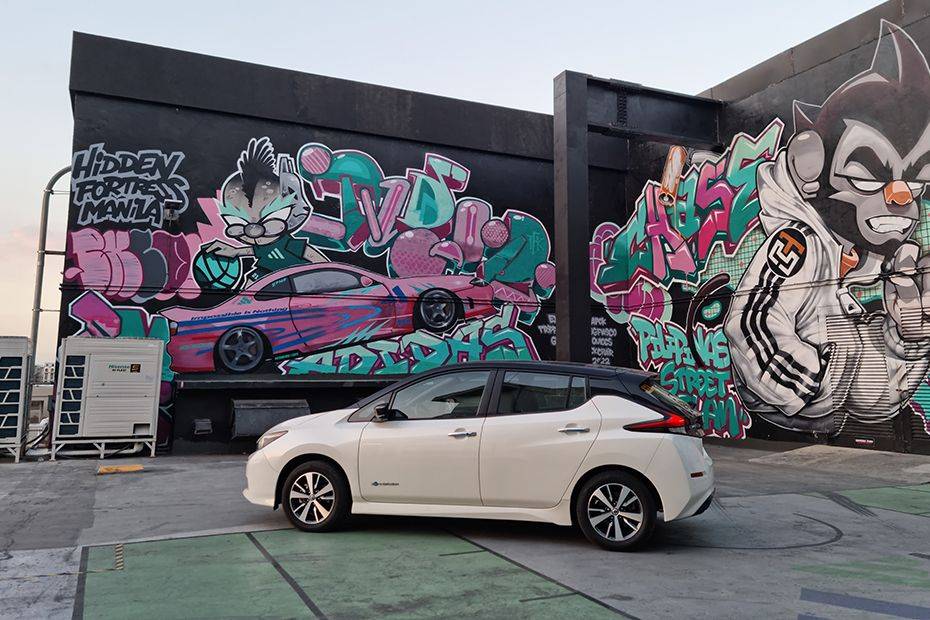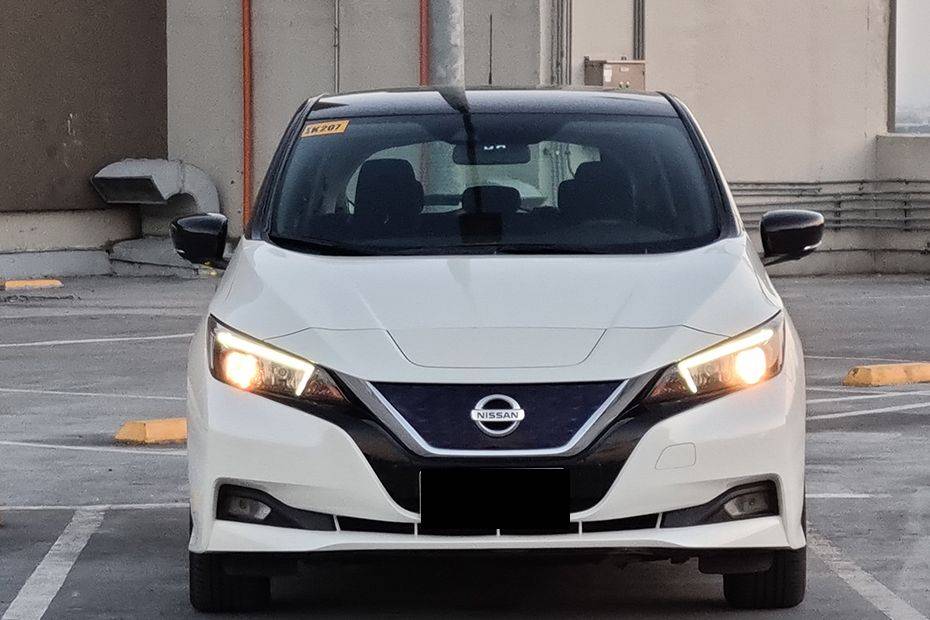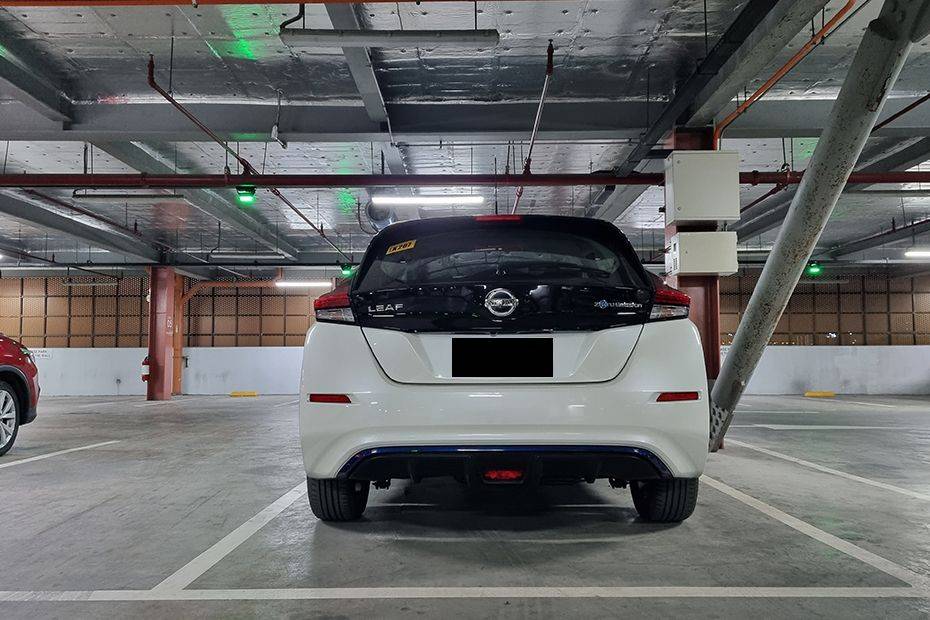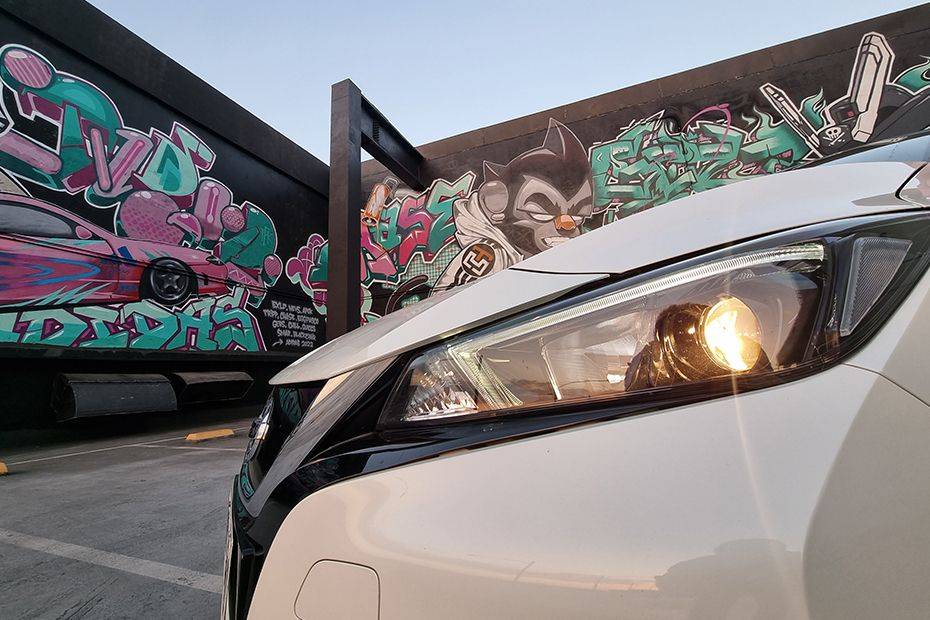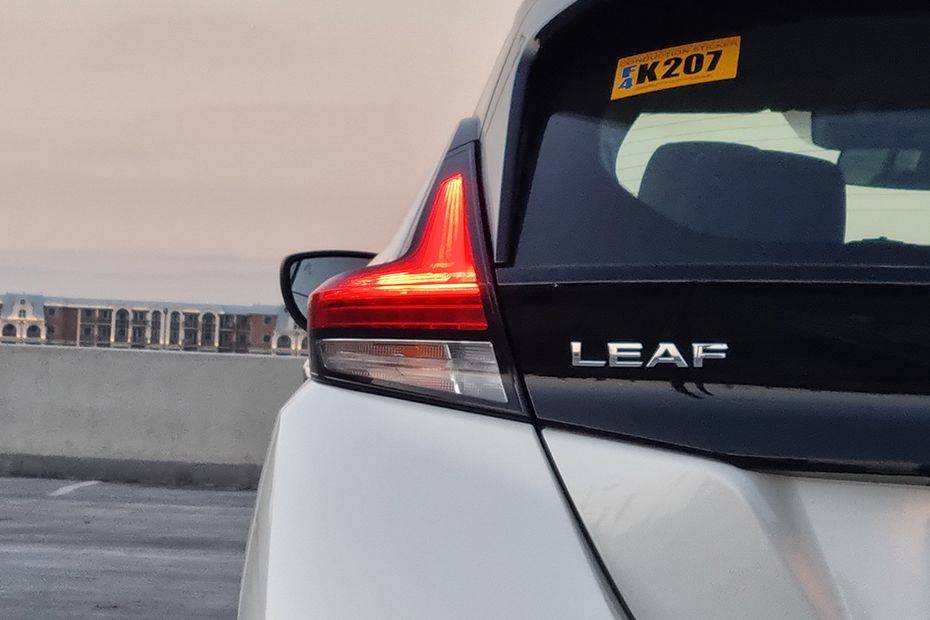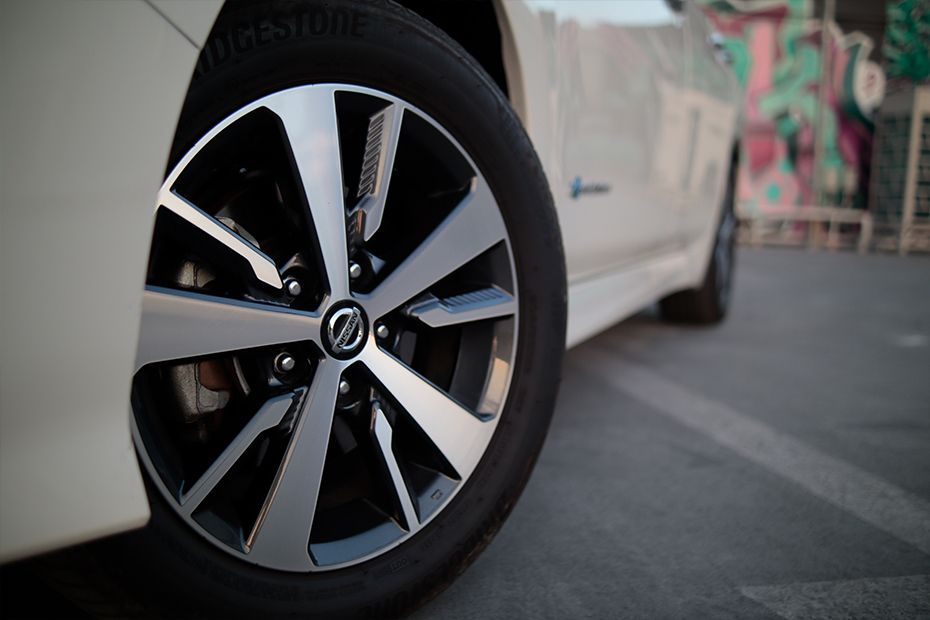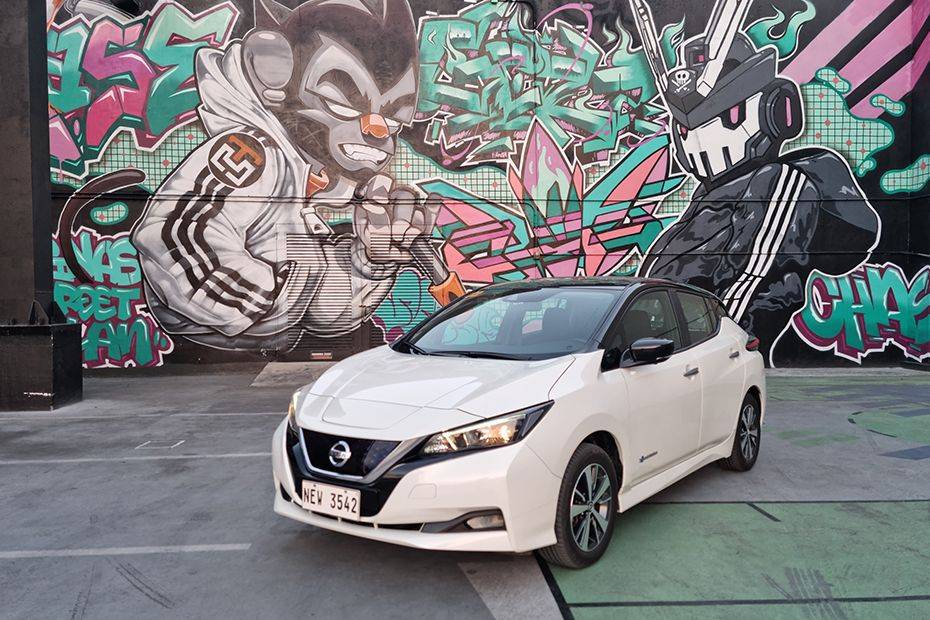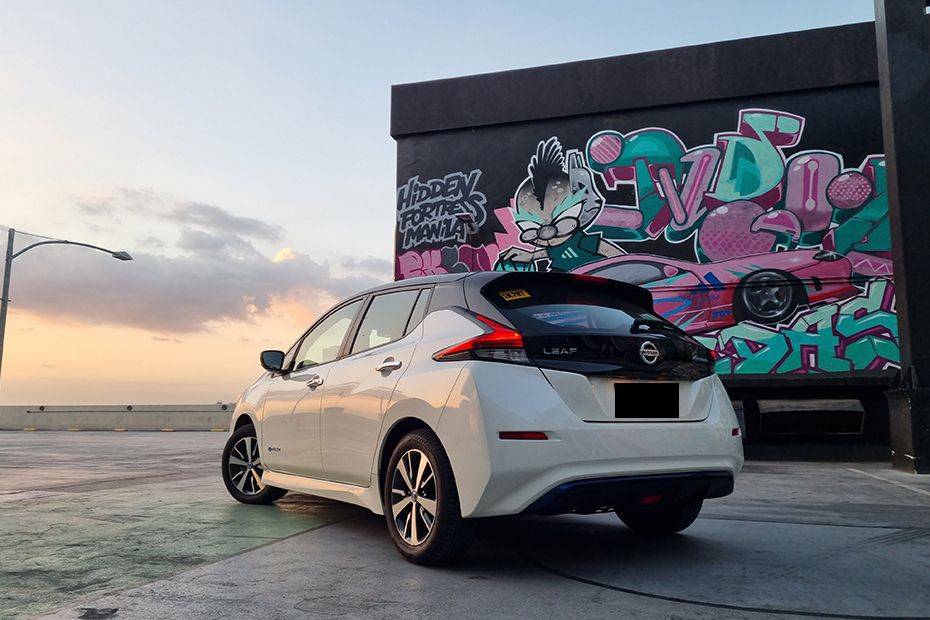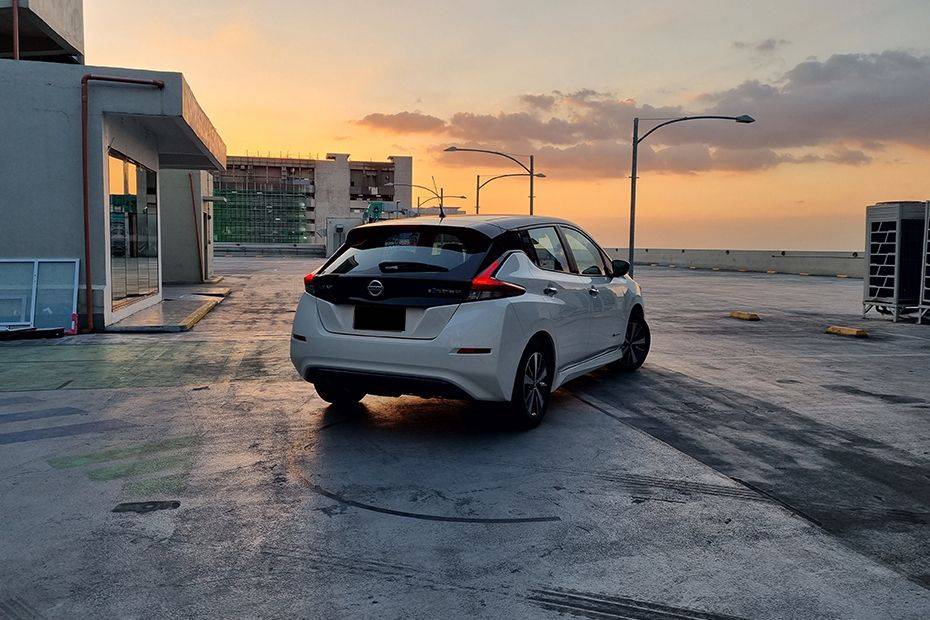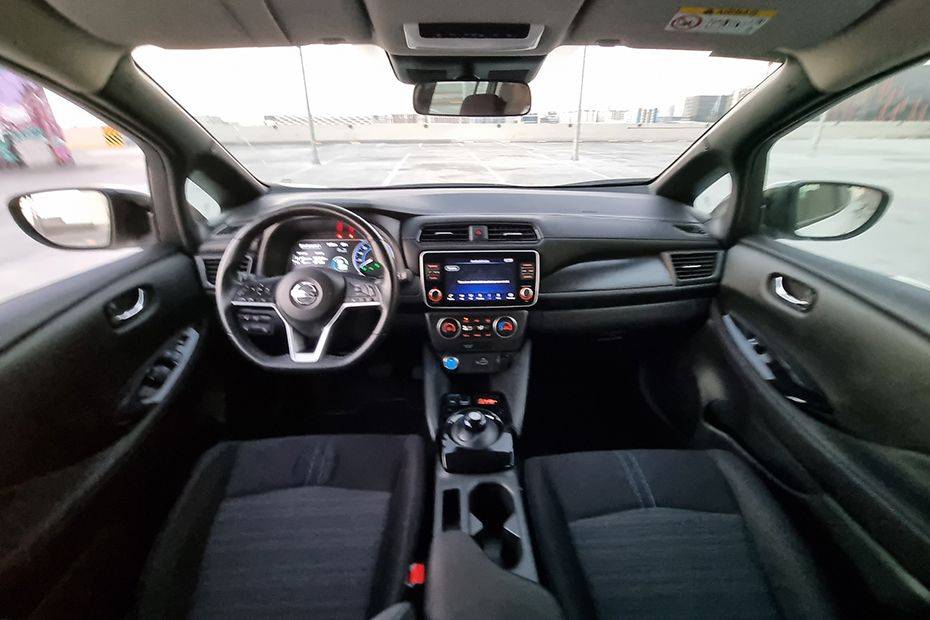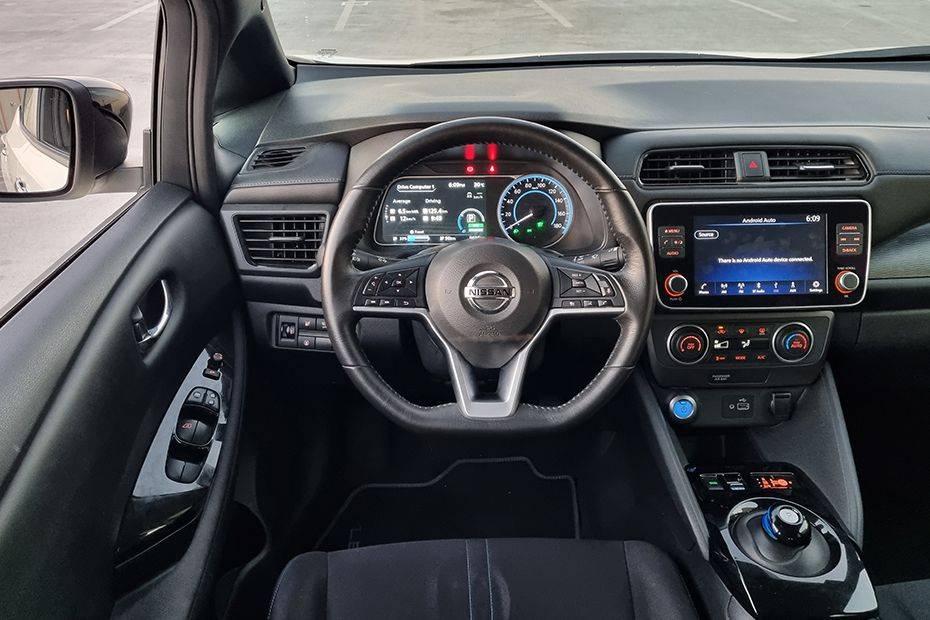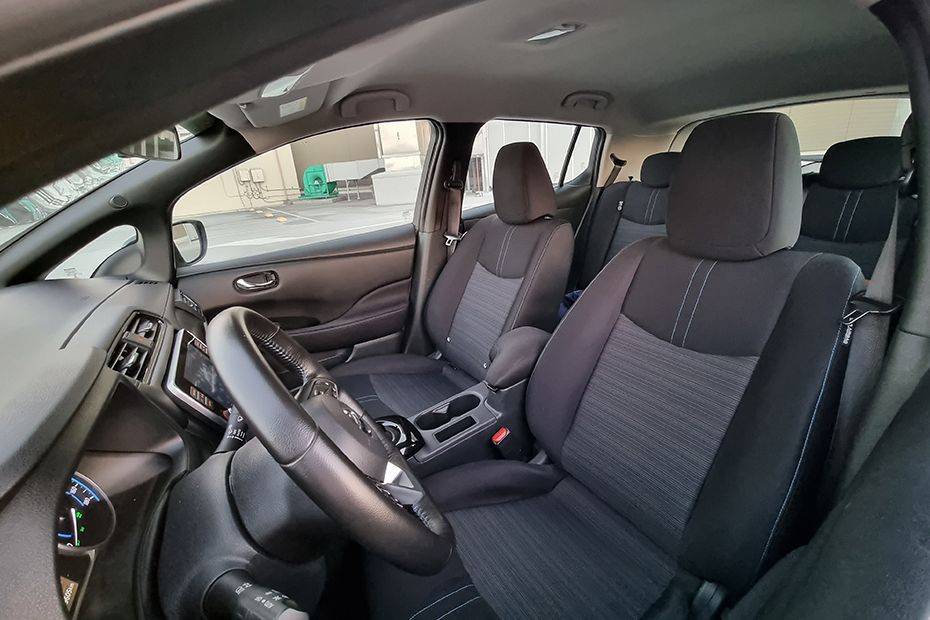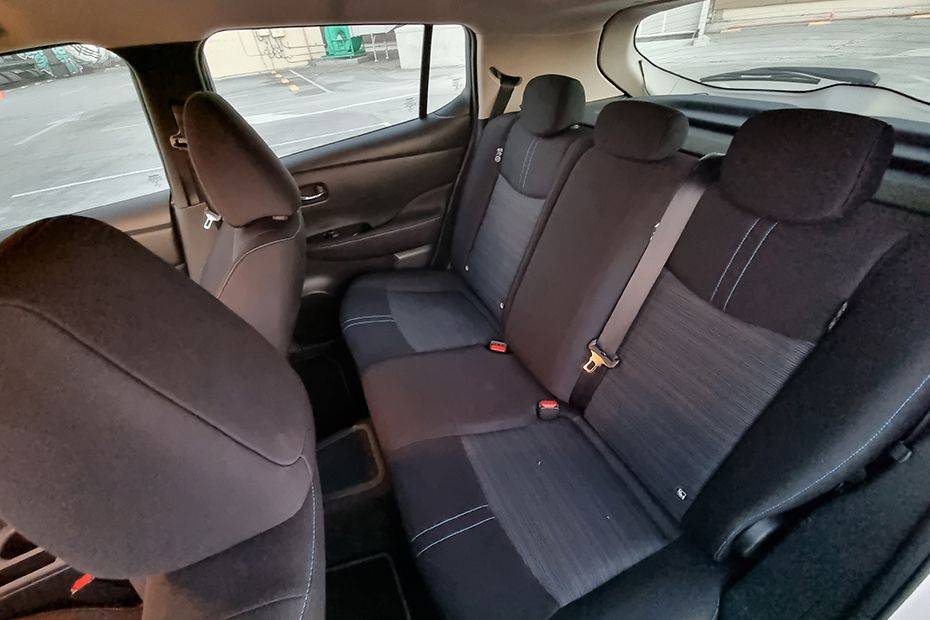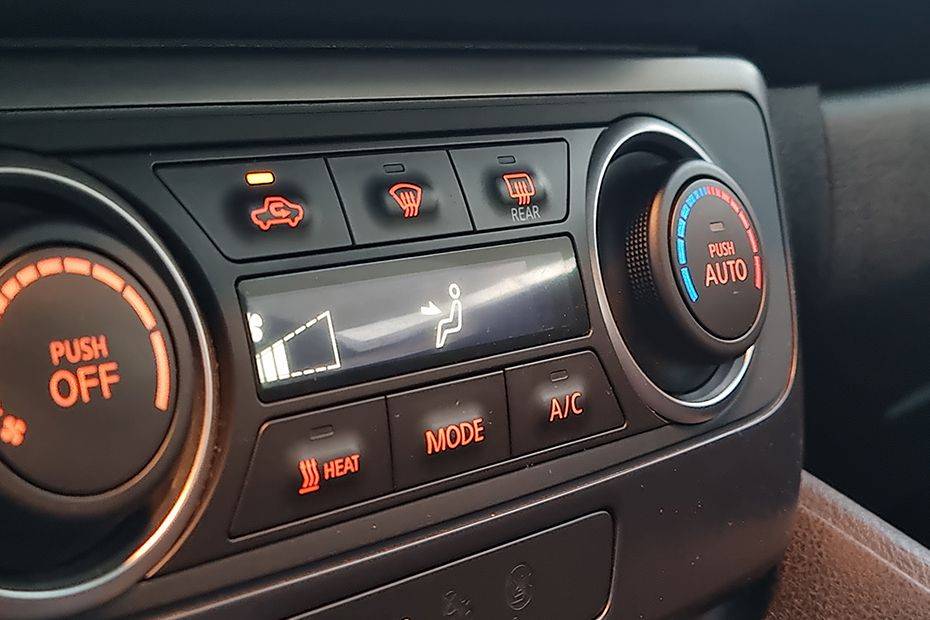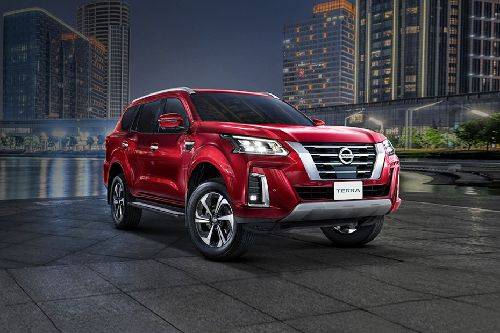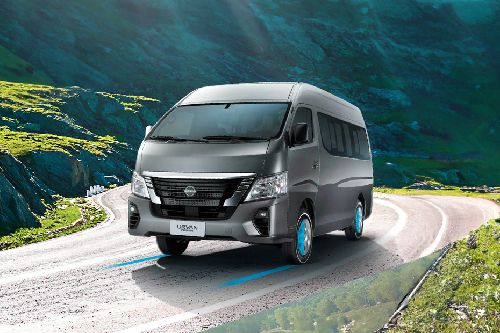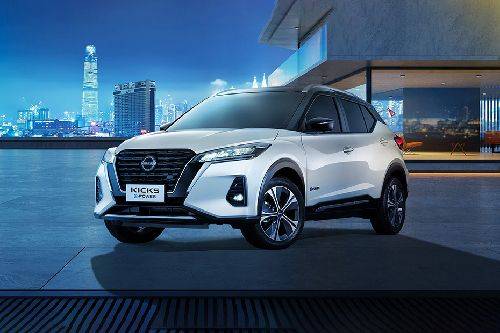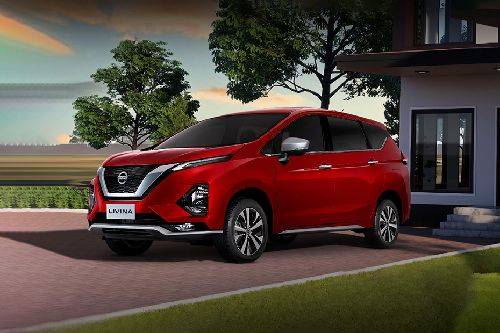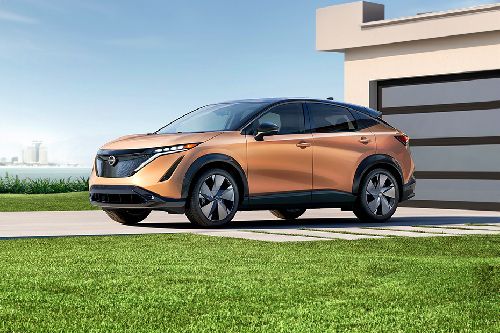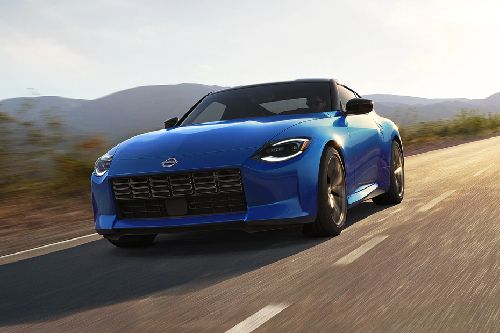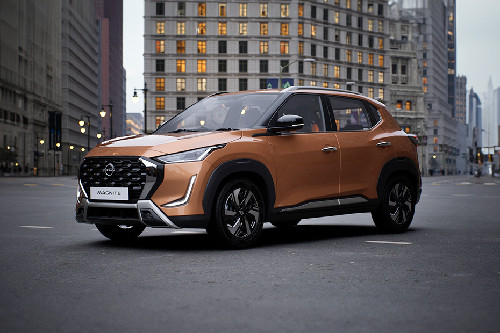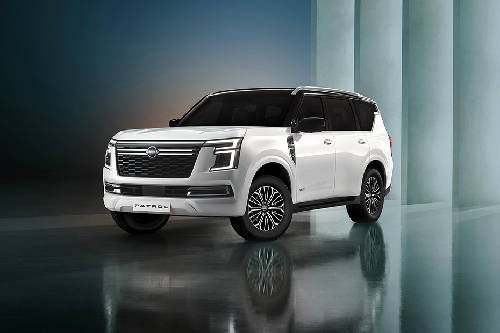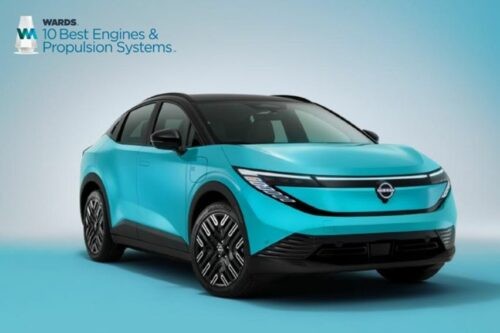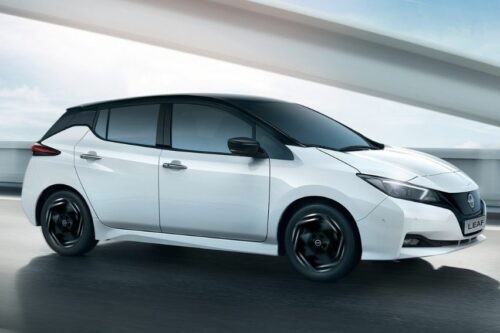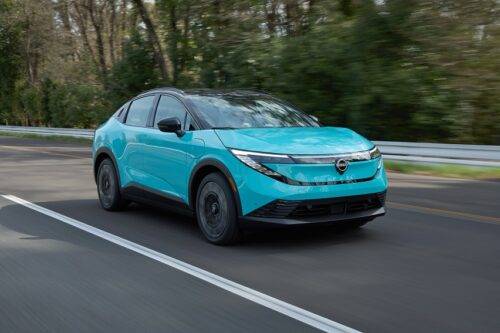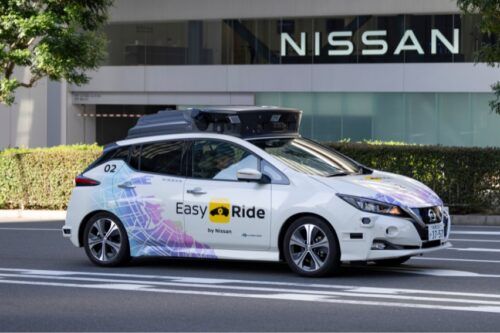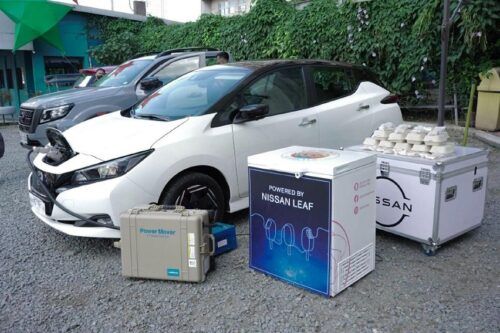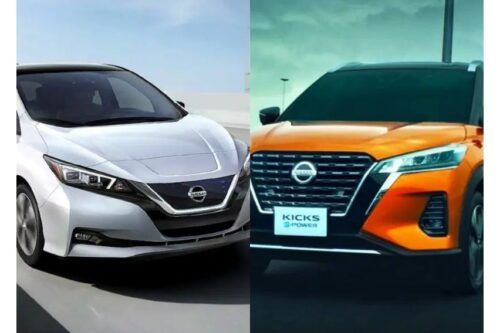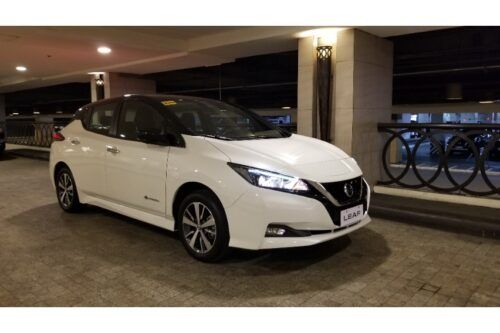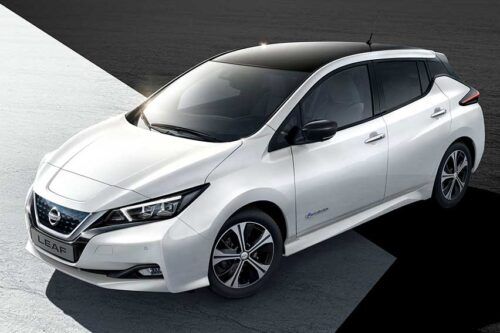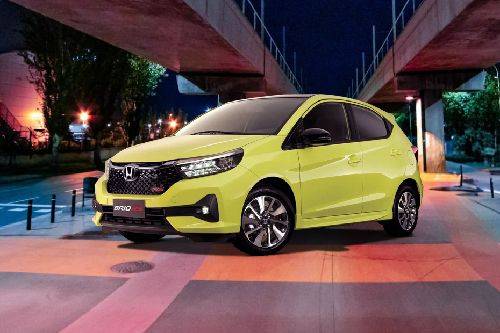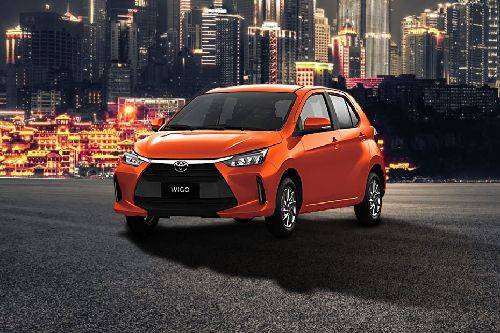Nissan Leaf 2026
Nissan Leaf 2025 is a 5 Seater Hatchback available at a price of ₱1.998 Million in the Philippines. In terms of size, the Leaf measures 4490 mm in length, 1788 mm in width, and 1540 mm in height, with a ground clearance of 155 mm —ideal for urban driving conditions. With over 17 user reviews, the Nissan Leaf is praised for its features, fuel efficiency, seating comfort, and engine performance. Top competitors of the Leaf in the Philippines include the 3 Hatchback, MG 4 EV and Ora 03.
Read More|
|
Electric |
|
|
Automatic |
|
|
40 kwh |
|
|
148 hp |
|
|
(0-100%) In 7.5 Hours |
|
|
(0-80%) In 40 Minutes |
|
|
311 km |
Leaf Pros & Cons
Key advantages and drawbacks at a glanceModern exterior design
Efficient powertrain
Too simple looking interior layout
Limited comfort and convenience features
Recent Updates of Nissan Leaf
Nissan is planning on discontinuing the Leaf to pave the way for a new generation of EVs. As for the Philippines, Nissan recently axed the price of the Leaf from PHP 2.789 Million to PHP 1.998 Million. Powering the Leaf is a 40kWh lithium-ion battery that delivers 148 hp of power and 320 Nm of torque. The engine is capable of reaching a top speed of 140 kmph and gets a range of 311 km on a full charge. The safety kit on the Nissan Leaf includes six airbags, vehicle dynamic control, ABS with EBD and brake assist, Hill Start Assist etc.
Nissan Leaf Variant and Pricelist
Nissan Leaf price in Philippines start from ₱1.998 Million for base variant Electric. Nissan Leaf automatic version price starts from ₱1.998 Million. Leaf price for 1 variants is listed below.
- Electric
| Variants | Price | Compare | |
|
Nissan Leaf Electric
Automatic, 5 seats, 40 kWh, 148 hp
|
₱1.998 Million (SRP) | View Offers |
|
Compare Nissan Leaf with Alternatives
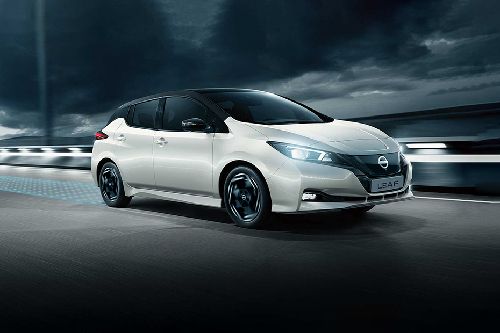
|
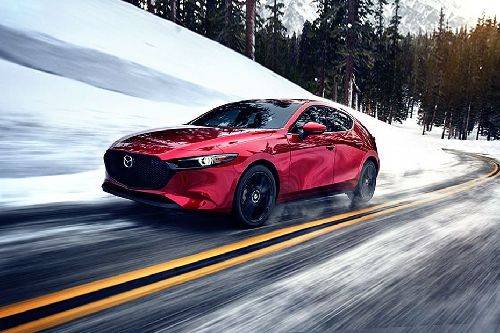
|
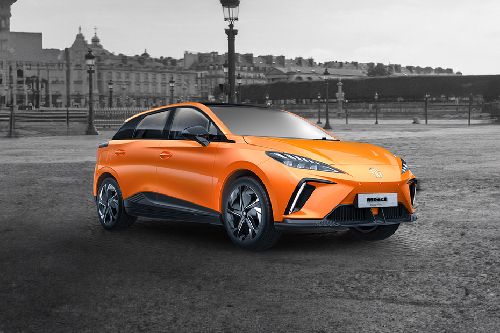
|
|
Battery Capacity
40 kwh
|
0.216 kWh
|
51 kWh
|
|
AC Charging
(0-100%) In 7.5 Hours
|
-
|
(0-100%) In 4.5 Hours
|
|
DC Charging
(0-80%) In 40 Minutes
|
-
|
(10-80%) In 26 Minutes
|
|
Fuel Type
Electric
|
Gasoline
|
Electric
|
|
Power
148
|
153
|
170
|
|
Driving Range
311 km
|
-
|
350 km
|
|
Transmission Type
Automatic
|
Automatic
|
Automatic
|
|
Engine
-
|
1998
|
-
|
|
|
Nissan Leaf Price In Philippines
| Quezon City ₱1.998 Million |
| Makati City ₱1.998 Million |
| Cebu City ₱1.998 Million |
| Davao City ₱1.998 Million |
Gallery of Leaf
- exterior
- interior
- color
- Road Test
Nissan Leaf 2026 Exterior Images
Exterior ImagesExplore 14 Exterior images of the Nissan Leaf and Get a Closer Look
Nissan Leaf 2026 Interior Images
Interior ImagesExplore 4 Interior Images of the Nissan Leaf and See What’s Inside.
Nissan Leaf 2026 Road Test Images
Nissan Leaf Videos
Watch latest video reviews of Nissan Leaf to know about its interiors, exteriors, performance, mileage and more.
Compare Variants Of Nissan Leaf
- Electric
Nissan Leaf Review 2026
Abhishek Katariya says
There’s a lot of noise surrounding electric vehicles (pun intended) in recent times. With all the carmakers making a shift towards electric mobility at a gradual pace, the mass-marketization of this segment is yet to happen. However, Nissan has given the much-needed push to start a momentum in the affordable electric vehicle category with its globally-popular Leaf EV.
The Nissan Leaf is one of the most popular and high-selling electric vehicles all around the world and is one of the oldest and most trustworthy nameplates in the category of electric mobility. The Leaf made its debut for the first time in 2010 with the first-generation version, which was replaced by the second generation version – the one which is on sale in the Philippines car market right now.
The second-generation Nissan Leaf came to the Philippines car market in May 2021, and since then, the electric five-door hatchback has remained unchanged. This version is dramatically different in its appearance as compared to the first-generation model it replaced worldwide. Taking a ‘leaf’ (pun intended) from the latest curvy-looking design philosophy of Nissan seen on cars like Micra and Almera, the new Nissan Leaf looks much sharper than the previous-generation model.
On the inside too, the Nissan Leaf has evolved a lot with a more mature-looking interior layout and new features onboard. However, where the Nissan Leaf offers much more than the previous-generation model is the list of features, especially the safety features with the autonomous driving assistance system (ADAS) on offer.
In the Philippines, the Nissan Leaf is available in a single full-spec variant, which is on offer with a single motor and battery combination. Priced at PHP 2.80 million, this single variant of Nissan Leaf is currently on sale with four dual-tone colour schemes – Gun Metallic, Vivid Blue, Magnetic Red and Pearl White, all of which have Pearl Black as the secondary colour for the rearview mirrors and roof panel.
Overview |
|
| Brand | Nissan Philippines |
| Price | ₱2.8 Million |
| Body Type | Hatchback |
Powertrain |
|
| Transmission Type | Automatic |
| Power Output | 148 hp and 320 Nm of torque |
| Fuel Type | Electric |
| Drive Type | 2WD |
Dimensions |
|
| Seating Capacity | 5 Seater |
| Width | 1788 mm |
| Length | 4490 mm |
| Height | 1540 mm |
| Ground Clearance | 155 mm |
Nissan Leaf Interior & Features
The Nissan Leaf might have evolved a lot when it comes to the cabin layout and aspects on offer, but it still doesn’t feel like a futuristic-looking space, which people generally expect from a modern-day electric vehicle. The overall cabin of the Nissan Leaf, which gets an all-black layout, looks functional and is adorned with a decent amount of features and practical storage bits here and there.
Seats and upholstery
The Nissan Leaf is the only CBU product in the Philippines which gets cost-effective fabric upholstery and not a leather finish for the seats and door trims. This five-seater car gets a six-way manually-adjustable driver’s seat and a four-way manually-adjustable co-driver’s seat, both of which get retractable headrests and back pockets. The second row of seats at the back feature a 60:40 split-folding pattern.
Comfort and convenience
The practicality of the cabin of the Nissan Leaf is well-matched with a decent amount of comfort and convenience features. While we would have loved to see a longer list of features here, the features on offer are enough for an entry-level electric vehicle. The Nissan Leaf comes equipped with power windows all around with a one-touch operation for the driver’s side window, automatic climate control, cruise control, and keyless entry with a push start-stop button.
The three-spoke flat-bottom steering wheel of the Nissan Leaf comes adorned with audio, Bluetooth and cruise control buttons on it, while the instrument console behind it is a part-digital unit with an advanced drive-assist TFT display with Nissan animation meter and EV information. The speedometer here, though, is an analogue unit with a blue backlit theme. The Leaf is also equipped with a Tonneau cover, a 12V power socket and a USB charging socket.
Entertainment, information and communication
The centre console in the dashboard of the Nissan Leaf has a large 8-inch touchscreen infotainment system sitting in the middle of it. This screen might not be the coolest-looking unit among those in all the electric vehicles, but it is adequately equipped with features like Android Auto and Apple Carplay. This screen also has supports for USB, iPod and Aux, and is accompanied by a 6-speaker audio system
Storage
The Nissan Leaf has a boot space of 435 litres, which is the largest among all the electric hatchbacks all around the world. In the Philippines context, this boot space of Leaf is even larger than a few entry-level compact sedans. Apart from this large boot compartment, the Nissan Leaf also has a closed glovebox and bottle holders in the lower centre console and the door pads of all four doors.
Leaf Exterior
One look at the Nissan Leaf and you will instantly relate it with the globally-available Nissan Micra, the sedan version of which is available in the Philippines in the form of Nissan Almera. However, while the Leaf retains the silhouette and a couple of curves from the Micra, it looks much sharper than the Micra with a few angular bits making it look more aggressive to the eyes.
The Nissan Leaf has a wide-looking front fascia, which has a smile-like appearance in the combination of the angular headlamps and lower-positioned front grille. The headlamps here are angular units, which house LED projector bulbs and boomerang-shaped daytime running LEDs with halogen turn indicators within them. These headlamps flow towards the grille, which gets Nissan’s V-Motion design language, with a closed grille with blue accents surrounded by V-shaped chrome garnish, which is again surrounded by piano black surrounds which extend towards the headlamps.
The fog lamp housings, which get tiny fog lamps, are adjoined by a long streak of air dam on the lower part of the front bumper. Just above the closed grille in the middle, the Nissan Leaf gets the charging port, which is housed within a trapezoidal compartment. Smooth curves are flowing on both sides of the bonnet, which end in a curved fashion towards the starting point of the A-pillars.
The Nissan Leaf has a striking-looking side profile, which looks visually dramatic due to the curved bit on the lower part of the A-pillar and a curved kink at the bottom of the C-pillar. Due to these curved bits and the blacked-out finish for the pillars and rearview mirrors, the Leaf gets a floating effect for its roof. There is a sharp crease which flows just below the window beltline and adds a touch of character to the side profile. The premium essence of the side profile is further enhanced by 16-inch diamond-cut alloy wheels.
The sleek and aggressive look of the Nissan Leaf is evident in its rear profile as well. The electric hatchback has a sharply raked rear windscreen with a blacked-out roof spoiler at the top having an LED brake light in the middle. Apart from the rakish rear windscreen, the boomerang-shaped LED tail lamps, thick gloss black finish on the upper half of the boot lid and blue stripe at the bottom of the rear bumper add more visual drama to the rear profile.
In terms of dimensions, the Nissan Leaf measures 4,490 mm long, 1,788 mm wide and 1,540 mm tall, which makes it much larger in appearance than a conventional large hatchback and positions itself in the territory of midsize sedans. This nearly 1.5-tonne electric hatchback has a ground clearance of 155 mm and a wheelbase of 2,700 mm.
Nissan Leaf Ride & Handling
While the Nissan Leaf is a game-changer in the affordable electric mobility segment, the mechanical setup under its skin is not that revolutionary, and a pretty conventional one at that. The electric hatchback gets a suspension combination of independent Macpherson struts with coil springs at the front and a torsion beam axle with coil springs at the rear, both of which miss out on stabilizers. However, the plush setup for this suspension combination and the light steering setup means that the Nissan Leaf is an absolute breeze to drive in urban conditions and serves as a great city slicker. With ventilated disc brake at the front and solid discs at the rear, the Leaf gets 205/55 R16 tyres on all four corners.
Leaf Engine & Fuel Consumption
Given its affordable positioning in the market, one can understand that the Nissan Leaf has got a humble powertrain setup. The overall powertrain of the Nissan Leaf is a combination of an AC synchronous motor and a laminated lithium-ion battery. The electric motor of the Leaf produces 150 PS of maximum power and 320 Nm of maximum torque, which are great figures for a vehicle of this size. The single-speed reduction gear transmission of the Leaf channels the power produced by this motor to the front wheels of the car.
The 40 kWh lithium-ion battery pack of the Nissan Leaf delivers a maximum claimed driving range of 311 km. This battery pack can be charged by a 6.6 kW double-speed charger provided on board. There are three drive modes on offer in the Nissan Leaf – Normal, B and Eco, with the B mode delivering more regenerative braking which charges the battery without hampering the driving power.
Nissan Leaf Braking & Safety
With this second-generation version, Nissan introduced a whole range of autonomous driving assistance system (ADAS) features in the Leaf. This list of ADAS functions includes driver alertness, around view monitor with moving object detection, adaptive cruise control with vehicle-to-vehicle distance control, blind-spot warning, autonomous emergency braking, high beam assist, lane departure warning and intelligent lane intervention, intelligent trace control, e-pedal with regenerative braking and rear cross-traffic alert.
Apart from these new-generation features, the Nissan Leaf is also equipped with traditional safety features like front, side and curtain airbags, hill start assist, ABS with EBD and brake assist, tyre pressure monitoring system, vehicle dynamic control and ISOFIX mounts for child seats.
Warranty
For the Leaf, Nissan is offering a vehicle warranty of 3 years or 100,000 km (whichever comes first). In addition to this, Nissan is also offering a warranty on battery up to 8 years or 160,000 km (whichever is earlier).
Leaf Verdict
Nissan Leaf vs the competition
The Nissan Leaf enters the segment of affordable entry-level electric vehicles, which has been witnessing the arrival of new Chinese players, who are intending to capture this end of the market. The prime competitors of the Nissan Leaf are:
BYD Dolphin – The BYD Dolphin is currently ranked as the most affordable electric vehicle in the Philippines. Available in just one variant, the BYD Dolphin is offered with a 95 PS electric motor, which produces 180 Nm of torque, and a 44.9 kWh lithium-ion battery, which returns a range of 405 km.
Changan EADO EV460 – This electric vehicle from Changan with a rather weird name is a sedan priced similarly to an affordable electric hatchback, which makes it one of the most practical and affordable EVs in the Philippines. With an electric motor which produces 134 PS of power and 245 Nm of torque, the Changan EADO EV460 has a 52.56 kWh lithium-ion battery capable of returning a range of 430 km.
Mazda MX-30 – Mazda has already announced that it is coming up with MX-30, its first-ever all-electric offering, in the Philippines very soon this year. Powered by an electric motor, which is rated to produce 145 PS of power and 271 Nm of torque, the MX-30 is an electric crossover, which returns a claimed range of 200 km from its small 35.5 kWh lithium-ion battery.
Final words
While the Nissan Leaf might not be as affordable and magical in its specifications as the more affordable Chinese electric vehicles, there is no denying the fact that it is a much more reliable and trustworthy name in the electric mobility space. The Nissan Leaf is a bankable product with a tried and tested powertrain, spacious cabin, striking looks, excellent safety features and top-notch quality, all of which justify its premium positioning in the compact and affordable electric vehicle category. While we do wish that the cabin of the Leaf was a bit more feature-rich and modern in its appearance, there is no denying the fact that it is one of the most spacious and practical places among electric vehicles to be in.
Nissan Leaf Owner Reviews
Write a Review- All (20)
- Specs (4)
- Price (9)
- Mileage (5)
More Choices in Used Cars
Sell your car at the best price
 Verified and genuine buyers
Verified and genuine buyers
Nissan Leaf Questions & Answers (FAQs)
Get answers to frequently asked questions (FAQs) about the Nissan Leaf, including its features, specifications, performance, maintenance, and more.
What is the Nissan Leaf 2026 Lowest Monthly Installment?
The lowest monthly installment for Nissan Leaf starts from ₱34,276 for 60 months with DP ₱399,600.
Helpful (363)What is the power output of Nissan Leaf 2026?
The Nissan Leaf delivers 148 hp of maximum power and 320 Nm of maximum torque.
Helpful (182)What is the ground clearance of Nissan Leaf 2026?
Nissan Leaf ground clearance is 155 mm . A higher ground clearance equals more practicality and good off road abilities.
Helpful (180)What is the Length of Nissan Leaf?
The length of Nissan Leaf is 4490 mm , while the width is 1788 mm .
Helpful (254)What is the Tire Size of Nissan Leaf?
The Nissan Leaf tire size is 205/55 R16 .
Helpful (264)What is the Alloy Wheel Size of Nissan Leaf?
The Nissan Leaf Alloy Wheel Size is 16 Inch .
Helpful (210)What is Nissan Leaf Weight?
The Nissan Leaf has a gross weight of 1988 kg .
Helpful (82)Latest Question
Q. What is the fuel consumption of Nissan Leaf?
Q. What cars are most compared with Nissan Leaf?
Q. What is the Nissan Leaf Horsepower?
Q. What is the Nissan Leaf Ground Clearance?
Q. What is the Minimum DP I Need to pay to take home Nissan Leaf?
Nissan Leaf Driving Range
| Fuel Type | Driving Range | Ev Running Cost |
|---|---|---|
| Electric(40 Kwh) | 311 km | ₱ 1.45/km |
Nissan Featured Cars
Nearest Nissan Dealers
Nissan Leaf News and Reviews
- Leaf News
- Leaf Featured Article
